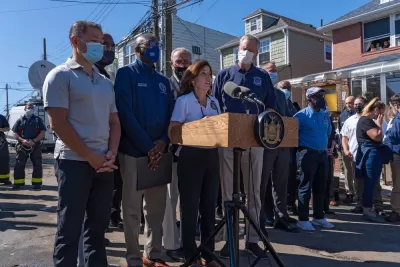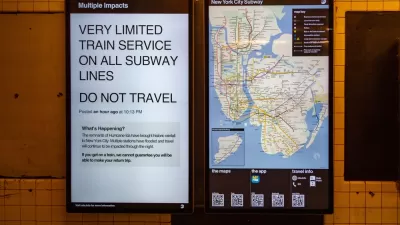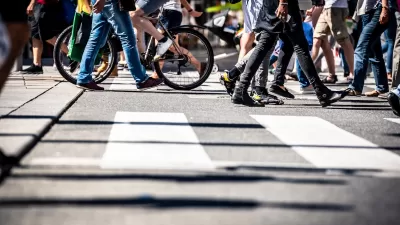Basement apartments were the least safe place to be as the remnants of Hurricane Ida sent floodwaters ripping through the Northeast.

Now that the water has receded and the Northeast is taking stock of the costs—human and economic—from the historic flooding that followed as the remnants of Hurricane Ida ripped through the northeast, basement apartments have been identified as a primary source of deadly risk throughout the storm.
Much of the media focus in the wake of Ida in northeast is focusing on illegal basement apartments—a huge source of housing for low-income communities in around New York City. "Cramped basement apartments have long been a prevalent piece of New York City’s vast housing stock, a shadowy network of illegal rentals that often lack basic safety features like more than one way to get out, and that yet are a vital source of shelter for many immigrants," write Mihir Zaveri, Matthew Haag, Adam Playford, and Nate Schweber for The New York Times.
As of the writing of the New York Times article, 11 of the 13 people killed during Ida in New York City died in a basement apartment—as many as had died in the state of Louisiana (again, at the time of the writing).
The public health and safety risks of basement apartments are well documented, according to the article, regarding fires or carbon monoxide poisoning. Climate change introduces a new risk, however: "the likelihood of deadly flooding, when a wall of water blocks what is often the only means of escape."
Building and safety regulations had trouble keeping up with basement apartments before extreme weather scrambled risk in the United States. The city had received 157,000 complaiints about illegal basement apartment conversions in 2021 leading up the tragic arrival of Ida to New York. "The law governing these apartments is complex, and includes rules that say a basement’s ceilings must be at least 7 feet 6 inches high and that living spaces must have a window. The city must approve apartments with a certificate of occupancy before they can be rented."
The article includes testimony from residents of basement apartments—including some who lived through potentially fatal flooding.
FULL STORY: How the Storm Turned Basement Apartments Into Death Traps

Alabama: Trump Terminates Settlements for Black Communities Harmed By Raw Sewage
Trump deemed the landmark civil rights agreement “illegal DEI and environmental justice policy.”

Planetizen Federal Action Tracker
A weekly monitor of how Trump’s orders and actions are impacting planners and planning in America.

Why Should We Subsidize Public Transportation?
Many public transit agencies face financial stress due to rising costs, declining fare revenue, and declining subsidies. Transit advocates must provide a strong business case for increasing public transit funding.

Understanding Road Diets
An explainer from Momentum highlights the advantages of reducing vehicle lanes in favor of more bike, transit, and pedestrian infrastructure.

New California Law Regulates Warehouse Pollution
A new law tightens building and emissions regulations for large distribution warehouses to mitigate air pollution and traffic in surrounding communities.

Phoenix Announces Opening Date for Light Rail Extension
The South Central extension will connect South Phoenix to downtown and other major hubs starting on June 7.
Urban Design for Planners 1: Software Tools
This six-course series explores essential urban design concepts using open source software and equips planners with the tools they need to participate fully in the urban design process.
Planning for Universal Design
Learn the tools for implementing Universal Design in planning regulations.
Caltrans
Smith Gee Studio
Institute for Housing and Urban Development Studies (IHS)
City of Grandview
Harvard GSD Executive Education
Toledo-Lucas County Plan Commissions
Salt Lake City
NYU Wagner Graduate School of Public Service





























